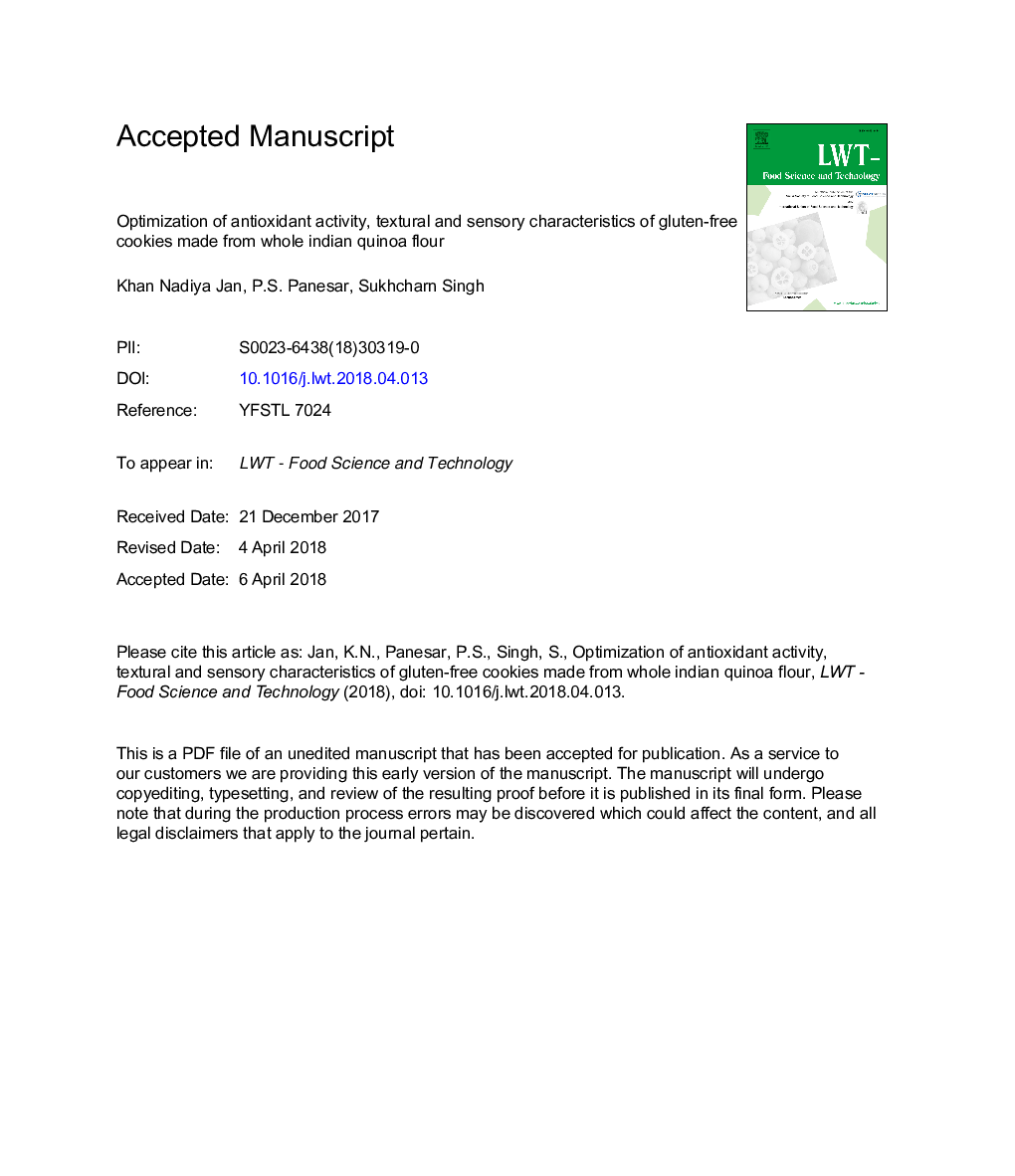| Article ID | Journal | Published Year | Pages | File Type |
|---|---|---|---|---|
| 8891089 | LWT - Food Science and Technology | 2018 | 28 Pages |
Abstract
The present study deals with optimization of the process parameters for formulation of gluten-free cookies from quinoa flour. The levels of major ingredients and process conditions were varied to determine their effect on responses (color, spread factor, hardness, antioxidant activity and overall acceptability) defining consumer acceptance of cookies. Response surface methodology was used to optimize levels of ingredients and process conditions and the selected variables had a dominant effect on responses. Increase in fat and sugar content increased spread factor and decreased the hardness of cookies, while an increase in baking temperature and time decreased spread factor and increased hardness. The optimized values obtained for independent variables i.e. fat content, sugar content, baking temperature and baking time were 41.83%, 33.95%, 181â¯Â°C and 18â¯min, respectively. Experimentally determined values for responses were color 53.05 spread factor 7.16, hardness 47.05, antioxidant activity 20.67 (% DPPH inhibition) and overall acceptability 7.61. Results obtained from this study validate the production of functional and acceptable gluten-free cookies made from quinoa.
Related Topics
Life Sciences
Agricultural and Biological Sciences
Food Science
Authors
Khan Nadiya Jan, P.S. Panesar, Sukhcharn Singh,
